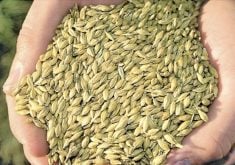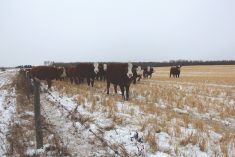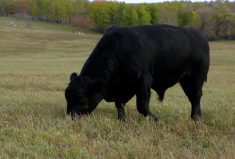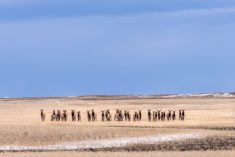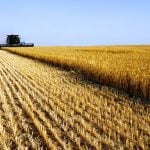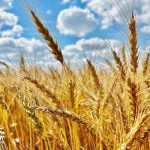For cattle producers who are fall calving, supplementing the calves’ diets is often important, given the state of forages at that time. This is where creep feeding comes into play.
For some cattle producers, while their grain-producing neighbours are in the fields taking the crops off, they are walking on foot through their pastures, searching for newborn calves or monitoring cows that are almost ready to give birth. While fall calving has benefits, it also presents challenges. One of these includes the quality of the forages — a reason why experts recommend creep feeding.
As summer wains, forages can vary, depending on the year. If there is a drought in July, the forages may be depleted. Even in a good year, once fall comes, the pastures can’t offer the same nutrients they would have only a few weeks before.
Read Also
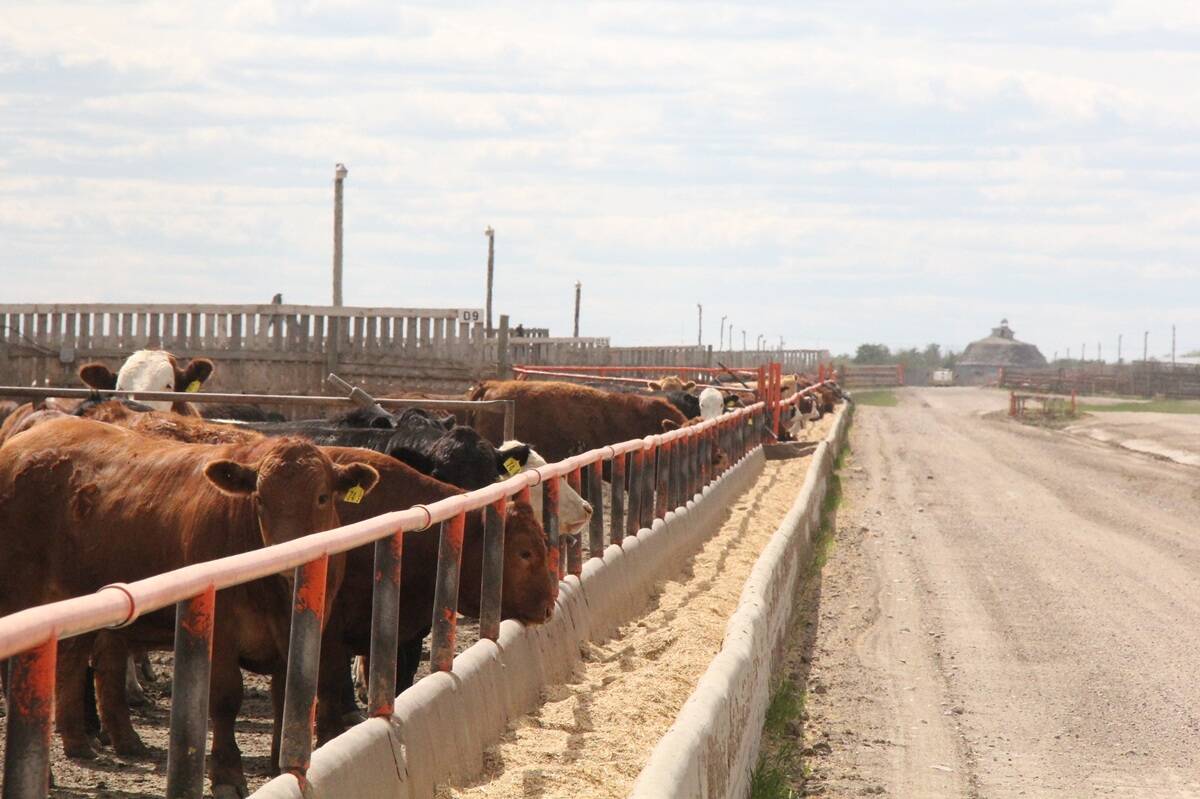
Unwinding the fibre in feedlot cattle diets
Research into how barley rolling method and undigestible NDF levels affect animal performance and digestive health in finishing diets
Creep feeding
A cow’s milk production peaks when the calf is 60 days old, and then declines. Before the 60 days, the calf usually starts consuming a small number of forages, but once the milk production starts to decline, the calf must consume more feed. Sometimes, depending on the season or the quality of the pastures, the calf can’t get all of its diet from grazing.
Creep feeding is the practice of supplementing the diet of nursing calves with feed they can’t access. This is done to ensure the calves are getting adequate nutrition and to increase the growth rate of the nursing calves.
Bart Lardner, a professor at the University of Saskatchewan’s College of Agriculture and Bioresources, said a producer can decide to implement creep feeding for several reasons, such as feed conversion, what goes into the creep feed and cattle prices versus feed costs.
“It’s typically used as a tool to increase the weaning weight of the calves and hopefully just generate more income for the producer when they check those calves at weaning or maybe shortly after,” he said. Creep feeding can also alleviate nutrient deficiencies that might be associated with drought or detrimental pasture conditions, and allow calves to adapt to a processed diet, he added.
Lardner said for producers who are calving in August or September, creep feeding is worth considering because of the potential decrease in forage quality in the fall.
“Obviously, the dam is relying on that pasture resource quality to produce milk for the calf. So, it could be a challenge.”
He said there could also be problems with body condition scores of the dam if a producer isn’t supplementing the diet of the calves, and the calves are completely relying on her for nutrition.
“Thin cows are not something we want to deal with in that October weaning period. So that could be a challenge, especially in those areas that we’ve seen drought for three or four years.”
Feed type
Lardner said there are different types of creep feeds, such as energy-based creep feeds, protein-based and forage-based. Each type would have different things in them; for example, an energy-based creep feed would consist of around 12 to 18 per cent crude protein.
For a high-protein creep feed, he said it would likely be mostly screenings since forages are low in protein. Forage-based creep feeds would probably consist of higher-quality forages.
“So, you just have to look at, okay, what is my situation? What are my objectives, and which one of these programs is going to work best for me?”
According to an Alberta government fact sheet regarding creep feeding, oats are preferred in most creep feeds because of their bulk and energy conservation, and because there are fewer issues with overconsumption with oat-based rations. Barley is also good in creep feeds, but because of the irregular feeding habits of calves, there is a greater risk of digestive upset due to barley’s higher energy concentration.
There is also an economic element with using oats because of the feeding habits of calves.
“A really cost-effective type would be just feeding those calves whole oats in a creep feed situation. Calves tend to chew their diet ingredients better than cows, and so they tend to masticate it more. So, we can actually get away with feeding whole oats. We don’t have to incur the cost of processing.”
The creep feeding fact sheet also noted the feed palatability must be carefully monitored. Lentil screenings, for example, are more palatable, while canola screenings are less so. The sheet said palatability can be improved by using combinations of two or more grains or additional bran, molasses, and/or trace mineralized salt, as well as keeping the creep feed out of the elements.
According to the Saskatchewan government’s website, the energy content of a creep feed should be around 65 per cent to 70 per cent total digestible nutrients, and around 13 per cent protein. Of the dry matter content, around 0.7 per cent should be calcium and 0.5 per cent should be phosphorus. Vitamins A, D and E should be included as well.
Pros and cons
There are both pros and cons associated with creep feeding. Pros include increasing calf weaning weight, conserving pasture, reducing morbidity after weaning, less shrinkage at weaning, calves maintaining their genetic potential, maximizing implant benefits and more.
Cons are prevalent, as well. The most notable one, which is often what influences producers, is the added feed cost. The calf’s selling price and feed cost must be considered when a producer considers creep feeding.
“Obviously it’s another cost, so you have to justify that cost,” Lardner said.
Another potential con is the weight creep feeding can put onto the calf. Creep feeding can put unwanted finish on calves, and cattle buyers often discriminate against fleshy calves.
“When you do wean these calves and put them through the sale barn, buyers are looking for green calves. By that I mean calves that are going to hit the feed yard and go to work. They kind of discount those fleshy calves.”
In the future, there can be challenges with the cow’s productivity if she is too fat as a calf.
With all these considerations, producers must decide what is best for their operation when it comes to creep feeding. This often varies from year to year, based on the quality and quantity of the forages and costs of gain to determine if creep feeding will be profitable overall.
According to the Alberta government, producers shouldn’t creep feed if:
- cows are milking well
- pastures are of high quality and abundant
- calves will be fed for a low daily gain after weaning
- calves are being raised as replacements and,
- grain prices are high relative to cow prices.
“I guess the real question in my mind is: when would you want to provide a creep program? The foremost in my mind is when feed quality or pasture quality or availability limits the growth of the calf and the dam performance, so that’s paramount,” Lardner said.




